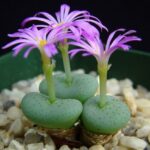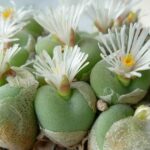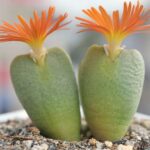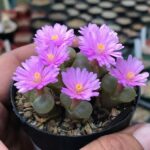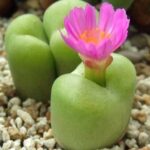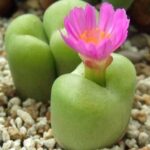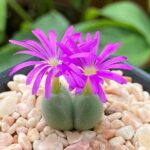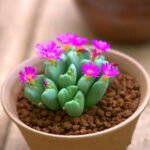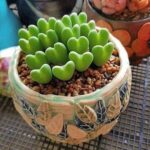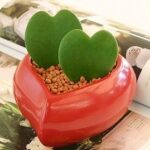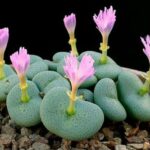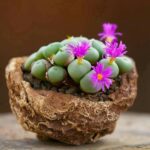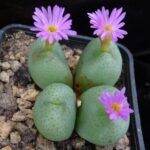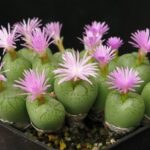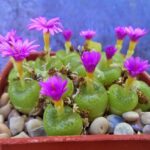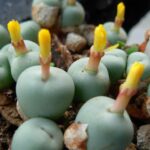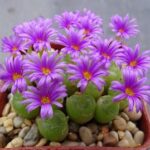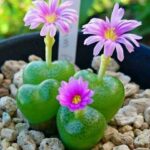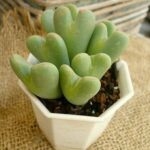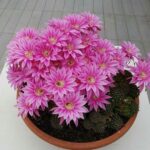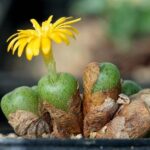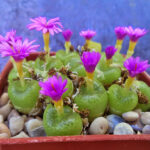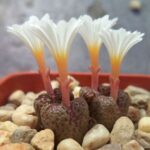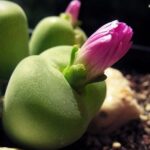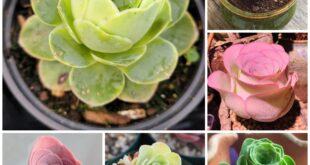Conophytum plants have their own care requirements that need to be taken into account to help them grow healthily. Learn more about these care requirements below.
Light
Conophytum plants typically require lots of bright sunlight during the day. However, sunburn can occur if they are exposed to too much direct sunlight and high temperatures.
To prevent this, you can leave the plant in the sun early in the morning. If you grow them indoors, you can keep them on your balcony or windowsill. Once the temperature starts to rise, you can move it to the shade.
You should also avoid exposing them to direct sunlight. Once their dormant period ends, you can slowly expose them to sunlight to prevent them from burning.
These plants can grow well in warm climates. They can also withstand cold to a certain extent, but not when temperatures drop below freezing.
irrigation
You should water these plants thoroughly and regularly during their growing season, which typically lasts from fall to early spring. Watering them once a week or even every two weeks can help you create a good routine for them.
However, be careful not to overwater these plants as this can cause root rot. You should wait until the soil is dry before watering the plant again.
These succulents tend to enter their dormant state in late spring, which can then last throughout the summer. At this stage, you should reduce or avoid watering to allow the plant to rest. If necessary, you can water it lightly once a month.
Floor
Conophytum plants require porous and well-drained soil that can drain excess water quickly without retaining or accumulating it. You can easily find a soil mix suitable for growing succulents at a local store or online store.
You can also make this soil mix yourself by combining some potting soil with peat, sand, perlite and limestone.
To supplement the drainage element, you can place this soil in a large, well-draining pot or one with holes to prevent water from pooling in the soil.
Fertilize
These succulents do not require too much fertilizer to grow healthily as they can do it themselves. In fact, you don’t need to add fertilizer until the plant has spent three years in the pot.
However, you can encourage growth by adding some fertilizer right before the growing season and just before flowering.
You should use a fertilizer that does not contain too much nitrogen. Make sure you dilute it enough before adding it to the soil.
Pests and diseases
Overall, you may not have too many problems in terms of pests and diseases with this plant. However, there is still a chance of pests such as mealybugs appearing, which you can control with a pesticide or insecticide. You can also try rubbing alcohol.
 TopsDecor.com Home Decor Ideas
TopsDecor.com Home Decor Ideas
